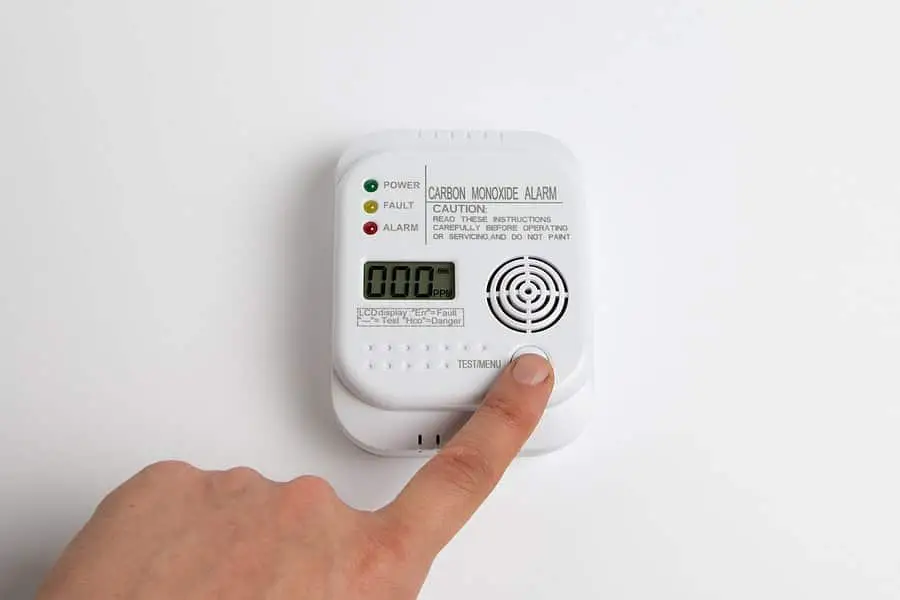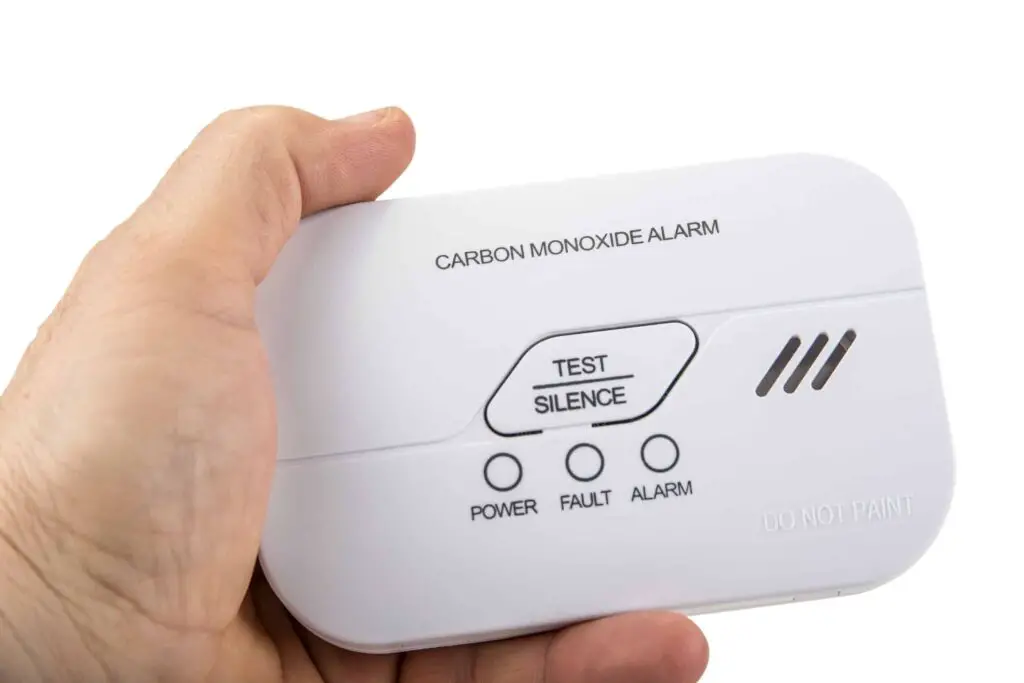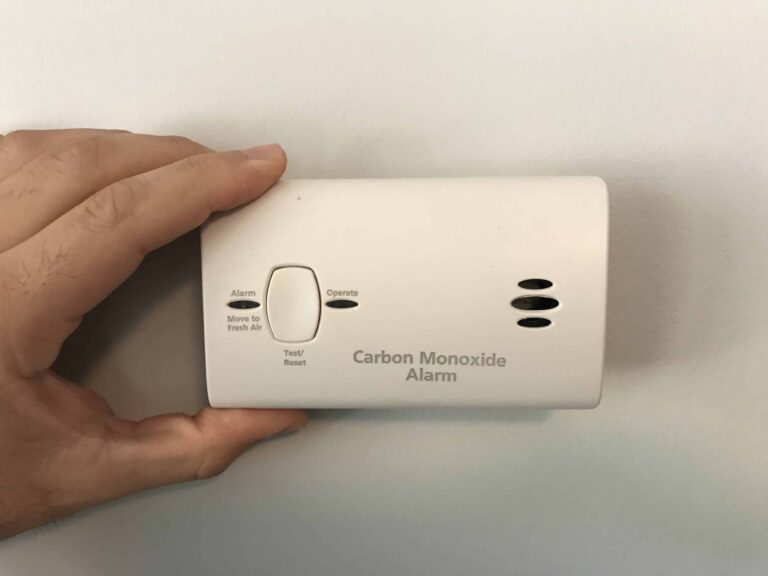Introduction
Do Apartments Have Carbon Monoxide Detectors: Carbon monoxide, a colorless, odorless, and tasteless gas, poses a significant threat due to its potential to cause severe harm or even death when inhaled in high concentrations. With this invisible danger lurking, the installation of carbon monoxide detectors has become a crucial aspect of building safety regulations. We will explore the reasons behind the imperative need for carbon monoxide detectors in apartments, the legal requirements that mandate their presence, and the role they play in safeguarding the lives of apartment residents. By understanding the significance of these unassuming devices, we empower ourselves to make informed decisions about our living spaces and ensure the safety of our loved ones.
Central heating systems that use gas, oil, or other fossil fuels to heat the apartment can potentially produce carbon monoxide if not properly maintained. Blocked vents, clogged filters, or malfunctioning parts can lead to incomplete combustion and the release of CO. Regular maintenance and inspections are crucial to ensure the safe operation of these systems.
Carbon monoxide doesn’t rise or accumulate in a room based on its weight or density. It disperses evenly throughout the air due to its molecular properties. This unique behavior underscores the importance of installing carbon monoxide detectors at appropriate locations within living spaces. These detectors provide the essential function of alerting occupants to elevated levels of carbon monoxide, enabling them to take prompt action to ensure their safety and well-being.

Do you need a carbon monoxide detector if you live in an apartment?
Many states have established laws requiring carbon monoxide detectors in any residence and some specifically mention that landlords are responsible for installing and maintaining them. There are penalties for neglecting to install detectors, from fines to more serious charges in certain instances.
Carbon monoxide is produced by the incomplete combustion of fossil fuels such as gas, oil, and coal. Common sources of CO in apartments include gas stoves, water heaters, furnaces, and fireplaces. In an enclosed space like an apartment, the accumulation of this gas can go unnoticed until symptoms of CO poisoning, such as headache, nausea, dizziness, and confusion, become apparent. In severe cases, exposure can lead to unconsciousness and even death.
In many jurisdictions, the installation of carbon monoxide detectors in residential spaces, including apartments, is legally mandated. These regulations are designed to protect occupants from the potential dangers of CO exposure. Landlords and property managers are often responsible for ensuring the presence and proper functioning of these detectors. However, it’s advisable for tenants to familiarize themselves with local regulations to ensure their own safety.
Apartment buildings often consist of shared ventilation systems, which means that a CO leak in one unit can potentially affect neighboring units. Even if you are cautious about your own gas-powered appliances, you cannot control the actions of your neighbors. Having a carbon monoxide detector ensures that you are alerted to any elevated CO levels, regardless of their origin.
Carbon monoxide detectors serve as early warning systems, providing audible alerts when CO levels become hazardous. This early detection allows you to take swift action, such as opening windows, shutting off gas-powered appliances, and evacuating the premises if necessary. Without a detector, you might not realize the presence of the gas until symptoms appear, potentially putting your health and the health of your loved ones at risk.
Can carbon monoxide be in an apartment?
Exposure to harmful levels of carbon monoxide can happen anywhere, including apartment units and complexes.
Numerous appliances commonly found in apartments can be sources of carbon monoxide. These include gas stoves, ovens, water heaters, furnaces, fireplaces, and space heaters. If these appliances are not properly maintained or if there is inadequate ventilation, they can produce CO and allow it to accumulate within the living space. Even seemingly minor issues, such as a blocked vent or a malfunctioning appliance, can lead to the release of this toxic gas.
Apartment units are often designed to be energy-efficient, which means they are well-sealed to prevent heat loss. While this is beneficial for maintaining a comfortable indoor temperature, it also means that any CO generated indoors can become trapped within the apartment. This accumulation can reach dangerous levels without residents being aware of it, as carbon monoxide is imperceptible to human senses.
Exposure to carbon monoxide can have severe health consequences. When inhaled, CO molecules bind to hemoglobin in the blood, preventing oxygen from being transported effectively throughout the body. This can lead to symptoms ranging from mild, such as headaches and dizziness, to more severe, including confusion, nausea, and loss of consciousness. Prolonged exposure or exposure to high concentrations of CO can be fatal.
Carbon monoxide can indeed be present in an apartment, posing a real and potentially life-threatening risk to residents. The invisible nature of CO makes detection without proper equipment impossible, underlining the importance of preventative measures. By maintaining appliances, ensuring proper ventilation, and installing carbon monoxide detectors, residents can take proactive steps to safeguard themselves and their neighbors from this silent but deadly gas.
What are two warning signs of carbon monoxide poisoning?
What are the symptoms of CO poisoning? The most common symptoms of CO poisoning are headache, dizziness, weakness, upset stomach, vomiting, chest pain, and confusion. CO symptoms are often described as “flu-like.” If you breathe in a lot of CO it can make you pass out or kill you.
Carbon monoxide poisoning often produces symptoms that are initially mistaken for common illnesses like the flu or cold. Headaches, dizziness, nausea, vomiting, and general fatigue are common indicators. As CO interferes with the body’s ability to carry oxygen, these symptoms occur because cells are deprived of the necessary oxygen to function optimally. If multiple people in a household experience similar symptoms at the same time and the symptoms seem to improve when they leave the premises, it could be a sign of carbon monoxide exposure.
Elevated levels of carbon monoxide in the bloodstream can lead to mental confusion, impaired judgment, and difficulty concentrating. Individuals might appear disoriented, forgetful, or have trouble communicating. This cognitive impairment can worsen as exposure continues. If you notice sudden changes in mental clarity or behavior in yourself or others, especially when in a specific indoor environment, carbon monoxide poisoning could be a potential cause.
While recognizing these warning signs is crucial, relying solely on them can be risky. Carbon monoxide poisoning often occurs when people are asleep or otherwise unaware of their surroundings, making it challenging to identify symptoms in time. This is why carbon monoxide detectors are a crucial line of defense.
Carbon monoxide detectors continuously monitor indoor air for the presence of CO gas. When levels rise to a dangerous threshold, these detectors emit a loud alarm, providing an early warning to occupants. Investing in high-quality carbon monoxide detectors and placing them strategically throughout your living space, especially near bedrooms and fuel-burning appliances, is essential for timely detection and response.
Where is carbon monoxide in an apartment?
Carbon Monoxide Sources in the Home
Water heaters. Furnaces or boilers. Fireplaces, both gas and wood burning. Gas stoves and ovens.
Many apartments are equipped with gas-powered appliances, such as stoves, ovens, water heaters, and furnaces. These appliances use natural gas or propane to function. If not properly maintained or if there are leaks in the gas lines, these appliances can emit carbon monoxide as a byproduct of incomplete combustion. It’s crucial to ensure these appliances are regularly inspected and serviced by professionals to prevent the risk of CO emissions.
If your apartment has a fireplace or a wood-burning stove, these can also be sources of carbon monoxide. Incomplete combustion of wood or other materials can release CO into the air. Ensuring proper ventilation and maintaining these heating sources according to manufacturer guidelines can help mitigate the risk of CO buildup.
Central heating systems that use gas, oil, or other fossil fuels to heat the apartment can potentially produce carbon monoxide if not properly maintained. Blocked vents, clogged filters, or malfunctioning parts can lead to incomplete combustion and the release of CO. Regular maintenance and inspections are crucial to ensure the safe operation of these systems.
Gas water heaters are commonly found in apartments and can be a source of carbon monoxide if not functioning correctly. Regular inspections and maintenance by qualified professionals are necessary to ensure that the water heater is operating safely and efficiently.
How long does carbon monoxide stay in an apartment?
Opening a window will slow carbon monoxide poisoning, but it likely won’t stop it. There simply isn’t enough airflow through most windows to get rid of the poisonous gas, and it could take between four and eight hours for the CO to dissipate entirely.
The source of carbon monoxide plays a significant role in how long it remains in an apartment. If the CO is generated from a specific event, such as a malfunctioning gas appliance or a car running in an enclosed space, the gas will begin to disperse once the source is shut off or removed. In these cases, the half-life of carbon monoxide (the time it takes for half of the gas to disperse) is around 4-5 hours in a well-ventilated area.
Ventilation is a crucial factor in determining how long carbon monoxide lingers in an apartment. Proper ventilation allows fresh air to replace indoor air, aiding in the removal of CO. Opening windows and doors to increase airflow can help accelerate the dispersal of the gas. If the apartment has a functioning ventilation system or exhaust fans, they can also aid in removing CO from the indoor environment.
The layout of an apartment and its indoor air circulation can influence how long carbon monoxide remains present. Apartments with poor air circulation may have pockets of stagnant air where CO can linger for longer periods. Ensuring that indoor air is well-distributed can help prevent the buildup of carbon monoxide.
Carbon monoxide detectors play a crucial role in detecting the presence of CO in an apartment. If a CO detector alerts residents to the gas’s presence, they should immediately evacuate the premises and contact emergency services. Once the source is addressed and ventilation is improved, the CO levels will begin to decrease.
Does carbon monoxide make you sleepy?
Symptoms of carbon monoxide poisoning
dizziness. nausea (feeling sick) and vomiting. tiredness and confusion. stomach pain.
Hemoglobin, a protein found in red blood cells, is responsible for transporting oxygen from the lungs to various parts of the body. Carbon monoxide has a strong affinity for hemoglobin, binding to it more readily than oxygen does. When CO binds to hemoglobin, it forms carboxyhemoglobin, which reduces the blood’s ability to carry oxygen. As a result, less oxygen reaches the brain and other tissues, leading to feelings of fatigue, drowsiness, and confusion.
The brain is highly sensitive to changes in oxygen levels. Reduced oxygen supply due to carbon monoxide exposure can lead to impaired brain function. This can manifest as difficulty concentrating, slowed reaction times, memory problems, and eventually, drowsiness and sleepiness. The brain’s reduced capacity to function optimally contributes to the overall feeling of being tired and sluggish.
One of the challenges in identifying carbon monoxide poisoning is that its early symptoms—such as headache, nausea, dizziness, and weakness—often resemble those of the flu. Feeling drowsy is another common symptom that can be easily dismissed as simply being tired. However, if multiple people in an enclosed space experience these symptoms simultaneously and feel better when they leave that environment, it could indicate carbon monoxide exposure.
As carbon monoxide exposure continues and levels increase, it can lead to more severe symptoms, including loss of consciousness. This is particularly dangerous as individuals exposed to high levels of carbon monoxide can slip into unconsciousness without realizing the severity of the situation. If unconsciousness occurs while asleep, it can make it challenging to escape from the source of CO, further exacerbating the risk.
Does carbon monoxide rise in a room?
You should also place a detector in any room situated directly above your garage. The specific gravity of Carbon Monoxide is 0.9657 (with normal air being 1.0), this means that it will float up towards the ceiling because it is lighter than regular air.
Because carbon monoxide doesn’t naturally rise or fall to a specific level, it’s crucial to install carbon monoxide detectors at appropriate locations within a room. Carbon monoxide detectors are designed to continuously monitor the air for the presence of CO. When elevated levels are detected, the detector sounds an alarm, providing an early warning to occupants.
Placing detectors at knee level or around chest height is recommended since carbon monoxide can disperse evenly throughout the room and is likely to be present at these levels. Additionally, installing detectors near potential sources of CO, such as gas appliances, fireplaces, and heating systems, can offer an additional layer of protection.
Carbon monoxide doesn’t rise or accumulate in a room based on its weight or density. It disperses evenly throughout the air due to its molecular properties. This unique behavior underscores the importance of installing carbon monoxide detectors at appropriate locations within living spaces. These detectors provide the essential function of alerting occupants to elevated levels of carbon monoxide, enabling them to take prompt action to ensure their safety and well-being.
The presence of windows, doors, and ventilation systems can impact how quickly carbon monoxide spreads throughout a room. Proper ventilation can help dissipate the gas more efficiently. The source of carbon monoxide emission plays a role in where the gas initially enters the room. For example, if a gas stove or a heater is situated near the floor, carbon monoxide may be introduced at a lower level.
Can carbon monoxide poisoning be cured?
Prompt treatment can reverse the effects of CO poisoning. However, there’s a risk of permanent damage to your brain and heart, which need a lot of oxygen.
If you suspect carbon monoxide poisoning, it is critical to get to fresh air immediately. Open windows and doors to ventilate the area, and leave the building if necessary. Once you are in a safe environment, call emergency services for professional medical assistance. They can assess the situation, provide initial treatment, and transport you to a medical facility if needed.
Medical treatment for carbon monoxide poisoning typically involves providing oxygen therapy to the affected individual. Breathing pure oxygen helps to displace carbon monoxide from hemoglobin in the blood, allowing oxygen to bind and restore normal oxygen levels. This process is typically administered through an oxygen mask or a hyperbaric oxygen chamber in severe cases.
After receiving initial treatment, individuals with carbon monoxide poisoning may need to be monitored for potential complications. The extent of the poisoning, the duration of exposure, and individual health factors all play a role in determining the necessary duration of treatment and monitoring.
In some cases, carbon monoxide poisoning can lead to lasting health effects, even after treatment. These effects can include neurological symptoms such as memory problems, difficulty concentrating, and mood changes. Long-term exposure to high levels of carbon monoxide can result in permanent damage to organs, particularly the brain and heart.

Conclusion
Amidst the hustle and bustle of daily life, the presence of a silent and deadly threat—carbon monoxide gas—demands our unwavering attention. This odorless, colorless assailant can permeate living spaces undetected, potentially leading to grave consequences for unsuspecting individuals. Enter carbon monoxide detectors, the unsung heroes of apartment living, designed to alert us to the presence of this hazardous gas and ensure our protection.
Beyond mere convenience, regulations and legal requirements play a pivotal role in shaping the answer. Governments and housing authorities around the world have recognized the need to fortify apartment buildings against this stealthy foe. As a result, many jurisdictions have enacted laws mandating the installation of carbon monoxide detectors in residential complexes, emphasizing the significance of proactive safety measures.
This article embarks on a comprehensive exploration, shedding light on the criticality of carbon monoxide detectors in apartment living. We will delve into the mechanics behind these unassuming devices, unravel the science of carbon monoxide poisoning, and decipher the life-saving role that detectors play in averting potential disasters. By understanding the symbiotic relationship between technology, regulations, and personal safety, we empower ourselves to make informed decisions about our living spaces and fortify our homes against the unseen threats that might seek to compromise our well-being.

